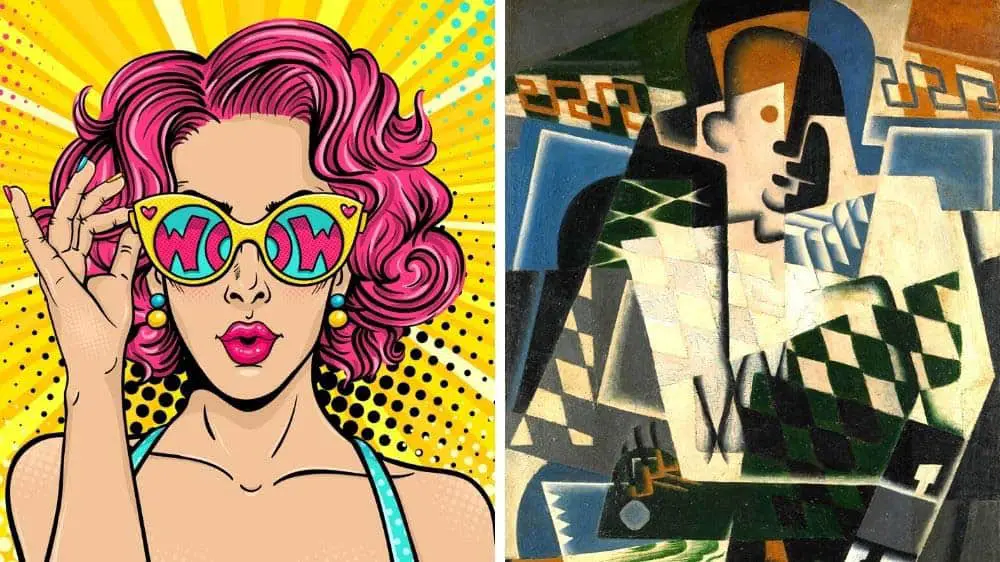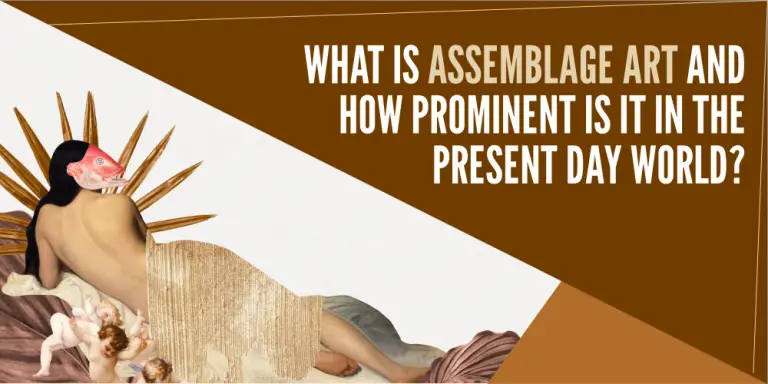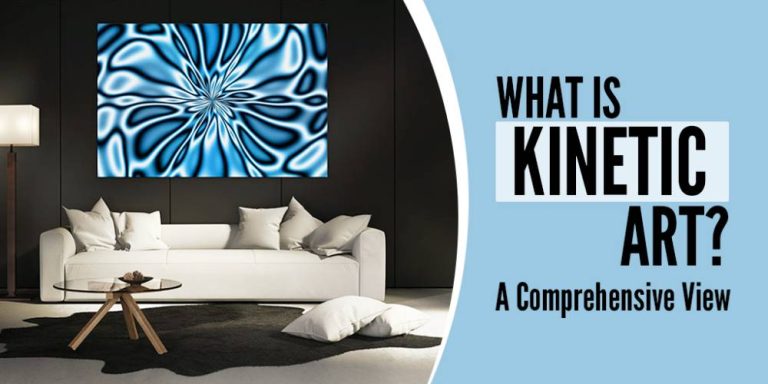Pop Art vs. Cubism: What’s The Difference? (w/Examples)
With the countless styles of visual art throughout the world today, it can often be challenging to separate similar styles from one another. Pop Art and Cubism are two interesting artistic movements that might seem similar, but by delving further into their characteristics, it is clear that these two art forms are unique in their own ways. So, how are Pop Art and Cubism different?
The difference between Pop Art and Cubism lies in the color choices, shapes, and types of lines used. Pop Art features bright, bold colors, and curved lines to catch attention. Cubism, on the other hand uses a dull, muted color palette, and sharp, angled lines to create a thought inducing reality.
| Pop Art | Cubism |
|---|---|
| – Bright colors – Clear shapes – Curved, defined lines | – Dull colors – Ambiguous objects – Sharp, straight lines |
(This article may contain affiliate links and I may earn a commission if you make a purchase)
These primary characteristics set Pop Art and Cubism apart. Read on to find out more information about the differences in these artistic styles when looking at their origins, and purpose.

What Is Pop Art?
The Pop Art movement was one of the most famous artistic styles to emerge in the twentieth century – and for good reason. Pop Art is instantly recognizable as a contemporary art form whose components make it stand out from other styles of art.
The in-your-face graphics and bright colors made Pop Art a style that became popular for use in comic books, art prints, and advertising.
So, what are the qualities that make Pop Art such an eye-catching style?
Pop Art Characteristics
When Pop Art first emerged (mid to late 1950s), it was seen as a very different approach towards art. With distinct colors, established structure, and an all-around vibrant appearance, Pop Art quickly made a name for itself in the art world. Chances are that you will recognize Pop Art pieces if you have seen them. Pop Art contains characteristics that set it apart from other artistic movements:

Color
One of the most well-known aspects of Pop Art is the eye-catching color that reverberates off of the picture. It really does seem to shout at you. Reds, yellows, and blues add to the picture-popping effect of Pop Art.
The vibrancy of the bright colors seen in Pop Art is just one reason the movement was such a popular fad. It is hard not to notice the bright colors of a Pop Art piece. Of course, it is not only red, yellow, and blue, but you can be sure that all colors in Pop artwork are bright enough to catch your attention.
Color is one of the most notable characteristics in Pop Art because, previously, very few art styles embraced the effect that vibrancy can add to a piece of work. The colors bouncing off a piece of Pop artwork are much more likely to capture one’s interest and attention making it perfect for depicting popular culture!
Satire
Another significant characteristic of Pop Art is its ability to create humor. The satirical side of the Pop Art movement made it more lighthearted and approachable when being observed.
In a time where numerous artistic movements began emerging in the nineteenth and twentieth centuries, it was nice to finally see artwork that showed the lighter side of things. The famous artists of this movement took an extra step to appeal to their viewers in a whole new way!
Frequently, art is meant to show a deeper meaning. With Pop Art, no such meaning is needed. Pop Art can allow viewers to take a step back from reality and immerse themselves in something comical for a time.
Pop Culture
The most distinguishable aspect of Pop Art explains the reason why it is named as such. Pop Art imitates Pop culture. It became well-known so quickly because it appealed to such a broad spectrum of people.
Whether it is a depiction of a Campbell’s soup can, a colorful collage of a celebrity, or any other colorful image of a popular subject, Pop Art is a staple artistic movement because it went against common norms and tested the ability of artwork to appeal universally.
By creating images that relate to everyday items that people use, or faces that people see, viewers get a sense of inclusion in the Pop Art movement. Even today, pieces with cell phones, celebrities, books, and more are likely to give you a feeling that you can relate to the artist.
Pop Art Origin
The Pop Art movement has quite an interesting origin. There are speculations about where the movement initially started, but most evidence suggests that its official origin comes from Great Britain. However, American artists were the one’s to take the reins of this new art form and become the primary influencers of this style.
The popular culture that had begun being depicted in Pop Art was related to America in such a way that much of the artwork dealt with American brands, celebrities, etc. Europe still had its fair share of influence, but after the spread of the Pop Art movement reached America, artists such as Andy Warhol and Roy Lichtenstein were quick to take part.
Due to its instant popularity, Pop Art spread through New York City like wildfire. Since it became so popular in America, Europe is not often given credit for being its birthplace.
Pop Art Goals
The main goals of Pop Art revolve around uniqueness. By being such a different art form, Pop art makes a name for itself by standing out. Before Pop Art and Postmodernism, many artistic pieces failed to successfully display relatable, appealing depictions meant to attract as much attention as possible.

Pop Art goes against the grain in terms of artistic normality. Using the comic book-like design, bright colors, and popular references guarantees that people are bound to notice it. The subjects typically displayed in Pop Art include:
- Words
- Food
- Celebrities
- Anything from current popular mass culture
Additionally, Pop Art goes to show that art can be created from just about anything. From comic book-like superheroes and soup cans to words like “POW!” and “Bazinga!”, Pop Art embraces uniqueness by standing out.
Famous Pop Art Artists
As previously mentioned, Andy Warhol and Roy Lichtenstein are probably the two most famous Pop Art artists. Warhol’s Campbell’s Soup Cans and Shot Marilyns, and Lichtenstein’s Whaam! and Masterpiece, are contenders for some of the most recognizable pieces of work out there.
Pop artist Richard Hamilton, perhaps lesser-known but equally important, was one of the earliest British artists to show his skill in Pop Art. He created pieces which had never been seen before, intertwining current style with new color, vibrancy, and structure.
What Is Cubism?
While the Cubism movement (early 1900’s) is far different from the Pop Art movement, it does not fail to exceed social boundaries in its own way. Cubism is equally as unique as Pop art, but with its own personality. Cubist expressionism is another of the most famous artistic movements of the twentieth century.
Cubist Characteristics
Cubism deals with several varying characteristics when compared side-by-side with Pop Art. You will come to find that there are highly evident variations among each artistic movement. The main characteristics of Cubism are:

Cubist painting by Juan Gris (1911)
Color
Cubism consists of monochromatic colors between stark lines that create a rather obscure and fragmented image. Using bland yellows, oranges, browns, blues, and blacks, the colors of Cubism are not necessarily what make the works so enticing.
However, the colors aid in emphasizing the depiction of a two-dimensional image. Cubist color invokes ambiguous shadows, blurred images, and a deeper meaning.
It is not that the artists who created these pieces looked to make their work dull, but rather, that the main idea of their art did not involve how interesting their color scheme was. In some instances, the use of monochromatic colors proved useful for catching viewers off guard, causing more confusion when looking at pieces of art and making them focus more on the structure and internal meaning of a piece.
Lines
Typically, Cubist works are constructed of numerous straight lines with sharp edges and sudden turns, creating awkward shapes and leaving observers to question what the image is portraying.
Cubism’s geometric shapes separate the movement from other art forms in that it does not give complete answers to the observer. Overlapping lines and unclear shapes prevented people from immediately recognizing the images in Cubist paintings.
Of course, Cubist works are not solely straight lines. Occasionally, an artist will have a few curves here or there to give their paintings more character. Still, as the straight lines are generally much more prevalent, viewers are left to form their own interpretation of Cubist works.
Structure
Cubism focuses more on art as a concept than a perceivable thing. In Cubism, there typically is no structure. The artist creates his or her image for ambiguity, not understanding. Before the Cubist movement, art history shows that art was usually expected to imitate nature. With the emergence of Cubism, this belief was diminished.
You are not supposed to understand Cubist works immediately. The dull colors and overlapping lines are included intentionally to startle viewers. There is no structure, and you have to deal with it. Therefore, make of the piece whatever you will.
Cubist Origin
Contrary to the Pop Art movement, the origin of Cubism is directly connected to Paris. So, Europe gets credit for this one entirely. Created predominantly by famous artist Pablo Picasso and Georges Braque, artists of this movement intended to take mainstream art in another direction.
Bottom line, Cubist painters felt that the current artistic styles needed an alteration. “Plain” art had become boring, and the idea behind Cubism was to invoke confusion and interest that caught as much attention as possible. It was decided a more abstract painting style would capture the viewer’s attention.
While a Cubist painting is not as vibrant as Pop Art pieces, Cubism quickly gained popularity in Europe in the early twentieth century.
The idea behind Cubism came from artists’ desire to retract from societal norms and instead focus on originality. They showed that order could be found in chaos.
Cubist Goals
Rather than continuing along the lines of clarity, nature, and color, Cubist artists looked towards deconstructing their works. An understanding was not a matter of concern for Cubism. It was not about what the picture looked like, but what it was about. Cubism aims to accomplish several goals:
- Anti-conformity
- Ambiguity
- Individuality
- Organized chaos

A Cubist abstract expressionist painting by Juan Gris (1917)
In most cases, the subject matter of Cubist art is not focused on what is actually portrayed. The focus is much more about abstract expressionism. As mentioned above, Cubism does an exceptional job of creating a sort of orderly chaos. Things appear thrown onto a canvas, but when you take a closer look, you can discern certain lines and shapes that create a beautiful image.
One of the main goals of Cubism was to refuse to resemble any other artistic style. This tactic proved effective as nothing like it had ever been done before. The whole idea of creating art to confuse was unheard of. However, the style continues to live on today.
Famous Cubist Artists
As stated previously, Pablo Picasso and Georges Braque are the principal founders of Cubism, though other artists, such as Salvador Dali, are widely recognized for their contributions.
What is interesting about Cubist artists is the reputation they gained from their work. When you think of Pablo Picasso, you cannot help but consider how odd his works look; the lines, shapes, and colors all mesh together to create what initially appears to be a collage of nothingness, only to be seen as a picture upon further observation.
Similarly, consider Salvador Dali himself; indeed, the first things that come to mind are those bulging eyes and a pencil-thin mustache. These artists were definitely a bit eccentric. But during the beginning of the movement, that is just what the world needed.
Differences Between Pop Art and Cubism
After learning about the stories behind Pop Art and Cubism, you can probably see how they are such different artistic styles. However, maybe you are still unsure of the dissimilarities.
Pop Art vs. Cubism (Origin Differences)
Concerning the origins of each, both Pop Art and Cubism came from Europe. However, how these movements traveled around the world caused considerable changes in their styles.
| Pop Art | Cubism |
|---|---|
| – In a sense, Americans sort of stole the Pop Art movement idea from Europe. At least, they were quicker to popularize the style. – Because America took notice of the movement, Pop Art typically focuses on popular culture specific to America; culture, media, brands, etc., refer to an American way of life. | – Clearly originated from Europe, so its style resembles European history, historical figures, culture, etc. – The European artists did an excellent job of earning the credit they gained for creating such a popular movement. |
Because Pop Art and Cubism took different geographical paths, the way their styles developed were also far from parallel. It is certainly interesting to see how specific international and cultural effects impact such unique forms of art. Different regions of the world contain different influences and opinions that form artistic movements to fit their preferences.
Pop Art & Cubism (Characteristic Differences)
The characteristics of Pop Art and Cubism are also entirely different. One style relies on vibrancy, clarity, and relatability, while another’s focus involves structural importance, lack of understanding, and the necessity for attention. In this sense, they are not related at all.
Cubism is very different from Pop Art in that it relates to viewers through individuality. Rather than draw attention to everyday items that people use -like Pop art. Cubism encourages observers to draw their own conclusions to find the specific meaning of a particular picture.
Pop Art was created to provoke the senses, while Cubism inspires thought.
Are There Any Similarities Between Pop Art And Cubism?
There are a few similarities between Pop Art and Cubism, but even the similarities reveal the different influences behind the two movements. You must remember, these were two separate artistic movements for a reason.
| Similarities | However… |
|---|---|
| Both intended to go against social norms. | Pop art achieved this by using satire and bright colors, while Cubism focused on separating from nature. |
| Both came from Europe. | As you know, however, the historical contexts are entirely different. |
| Both are two of the most influential artistic movements of the twentieth century. | Their goals in achieving this success were very different; Pop art looked to use mass media, advertisements, and current celebrities to join viewers in relatability. Cubism became famous for its profoundness and confusing nature. |
When you look at the facts that support Pop Art and Cubism, it is clear to see that there are not very many similarities between these two artistic movements at all.
Takeaway
Pop Art and Cubism are two of the most influential artistic movements of the twentieth century, and both styles are still present in the art industry today. With such interesting characteristics, origins, and famous contributors, it is no surprise that these two art forms remain so popular.
Whether it be through the use of popular culture to create relatability or complex structure to invoke pondering, art has the potential to become individual in a number of ways. Pop Art and Cubism are definitely different, but that does not take away from the validity of either. Though their origins are different, they will both carry on long into the future thanks to their fascinating visual appeal.








